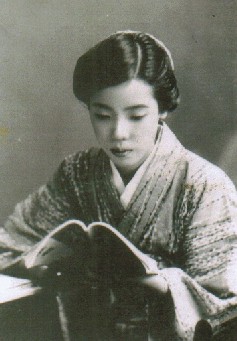Today we had a study group for counselors and psychotherapists. The theme was “genogram and family myths”.

At ICASSI 2007 in Netherlands, Marion Balla gave a lecture on genogram [1]. It is the family tree of direct ancestors. The father and the mother are included, while their siblings are not. We talk about previous generations as possible as we remember their life events.
The family myth is researched from an Adlerian point of view by Yoji Kobayashi, a Japanese psychologist [2]. It is episodes about ancestors.
Three people made a group; one was a counselor, one was a client, and one was a writer. I joined a group and talked about my genogram and family myths. My grandmother was a beautiful girl when she was young. I give her picture at the age of 18. She had a boy friend who was a university student. Another boy, who was a merchant, wanted to marry her, and asked her father, my great-grandfather, to give her to him. Her father gave permission to the boy, perhaps, because of the boy’s rich presents. At that time, the parents decided the husband of their daughter. After the marriage, he gave her a lot of presents. He traded with China, and whenever he visited China, he bought precious things, like jewels and Chinese porcelain, for her. Soon she came to love him, and forgot totally the university student. My grandfather died by tuberculosis at the age of 38. My grandmother always said, “However he was a good man, it was worthless dying so soon.” From this story, I learned two things: “Take care of the health”, and “The man must give tributes to the woman.
[1] Balla, Marion: The Use of Genograms in Clinical Practice. ICASSI 2007, Elspeet, Netherlands.
[2] Kobayashi, Yoji: On the Relations between the Family Myths and the Personality. Annual Report of Yokohama National University, 1997.

